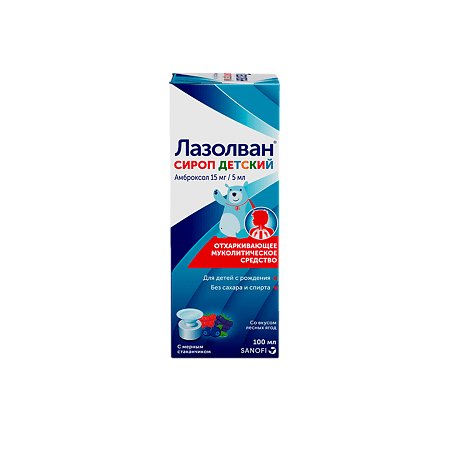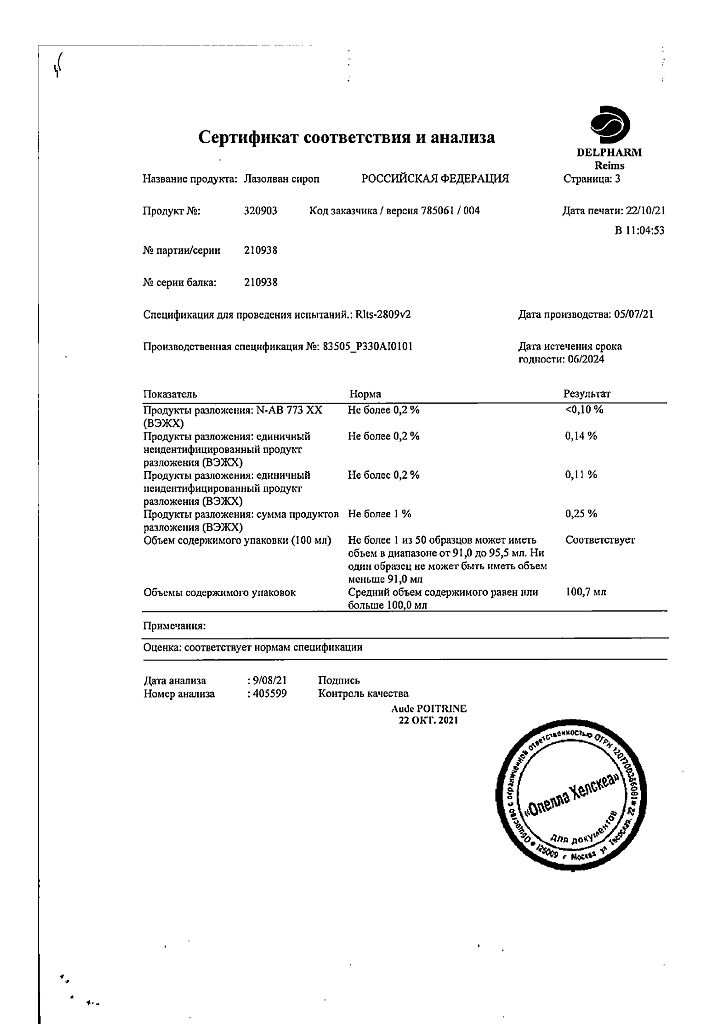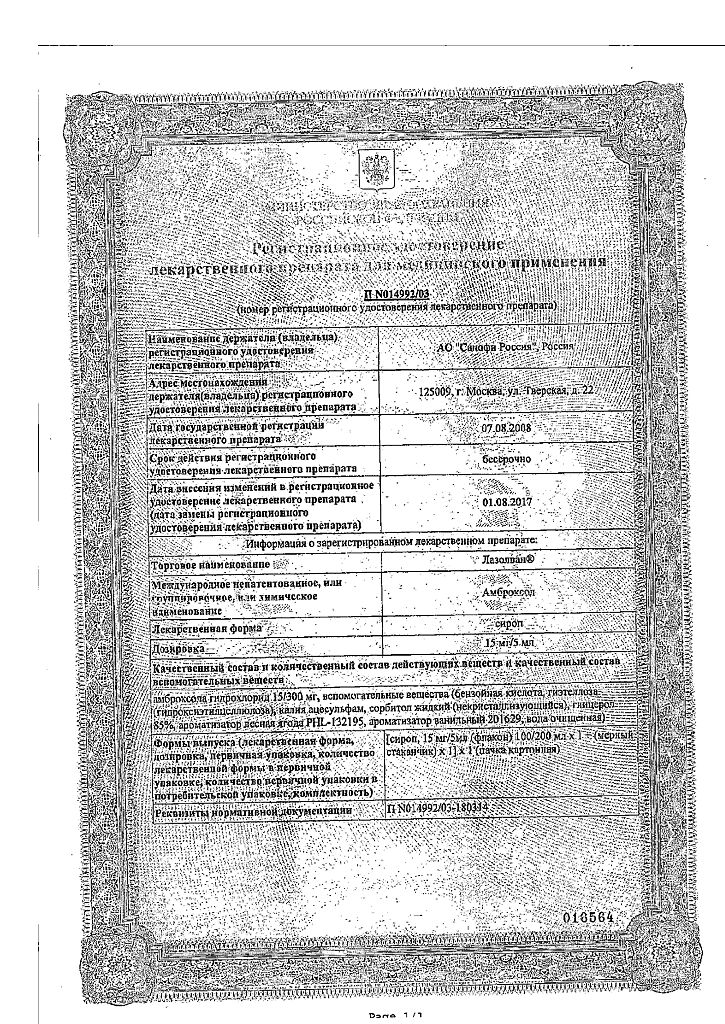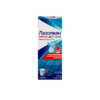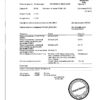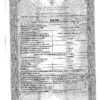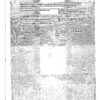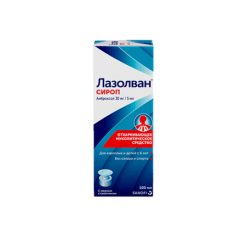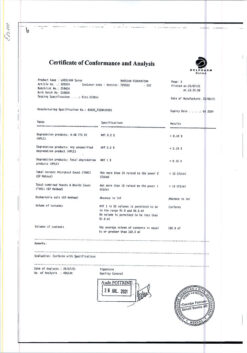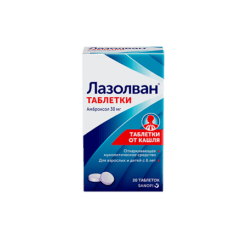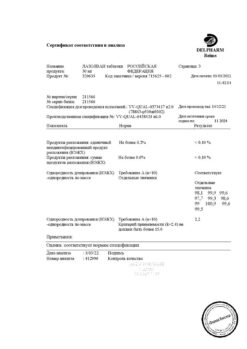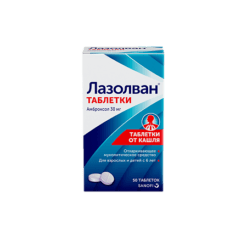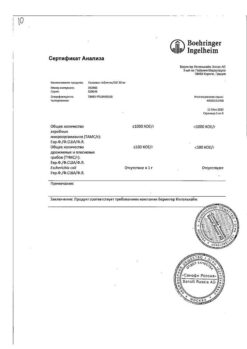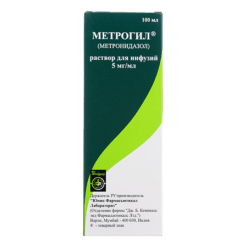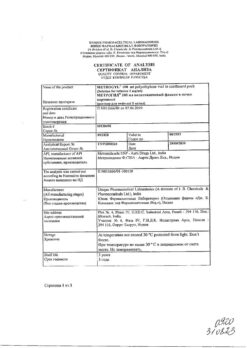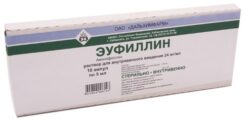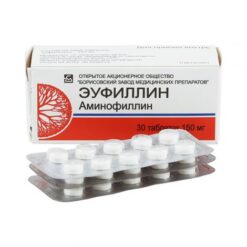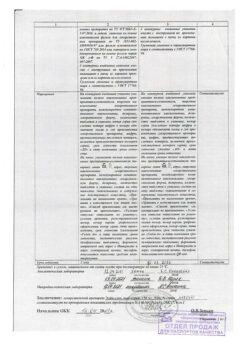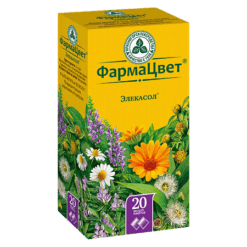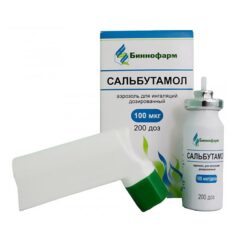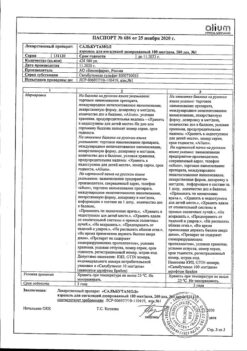No products in the cart.
Lazolvan, syrup 15 mg/5 ml 100 ml
€6.14 €5.37
Out of stock
(E-mail when Stock is available)
Description
Pharmacological action
Ambroxol, the active ingredient of Lazolvan®, has been shown in studies to increase secretion in the airways. It increases pulmonary surfactant production and stimulates ciliary activity. These effects result in increased mucus flow and transport (mucociliary clearance). Increased mucociliary clearance improves sputum discharge and eases coughing. In patients with chronic obstructive pulmonary disease, long-term therapy with Lazolvan® (for at least 2 months) led to a significant reduction in the number of exacerbations. There was a significant reduction in the duration of exacerbations and the number of days of antibiotic therapy.
Pharmacokinetics
All dosage forms of ambroxol immediate release are characterized by rapid and almost complete absorption with a linear dependence on the dose in therapeutic concentration range. Maximum plasma concentration (Cmax) with oral administration is reached after 1-2.5 hours. Volume of distribution is 552 l. In the therapeutic range of concentrations the binding to plasma proteins is approximately 90%.
The transfer of ambroxol from the blood to the tissues when administered orally is fast. The highest concentrations of the active component of the drug are observed in the lungs. Approximately 30% of the oral dose taken is subjected to the effect of primary passage through the liver. Studies on human liver microsomes have shown that CYP3A4 isoenzyme is the predominant isoform responsible for metabolism of ambroxol to dibromanthranilic acid. The remainder of ambroxol is metabolized in the liver, mainly by glucuronidation and by partial cleavage to dibromanthranilic acid (approximately 10% of the administered dose) and a small number of additional metabolites. The terminal half-life of ambroxol is 10 hours. Total clearance is within 660 ml/min; renal clearance accounts for approximately 8% of total clearance.
The radioactive labeling method has estimated that after a single dose of the drug, approximately 83% of the administered dose is excreted in the urine over the next 5 days. No clinically significant effect of age and gender on ambroxol pharmacokinetics has been found, so there is no reason to adjust the dosage according to these characteristics.
Indications
Indications
Acute and chronic diseases of the respiratory tract with the release of viscous sputum: acute and chronic bronchitis, pneumonia, chronic obstructive pulmonary disease, bronchial asthma with difficulty in sputum discharge, bronchiectasis.
Pharmacological effect
Pharmacological effect
Pharmacological action
Studies have shown that ambroxol, the active ingredient in Lazolvan®, increases secretion in the respiratory tract. It enhances the production of pulmonary surfactant and stimulates ciliary activity. These effects lead to increased mucus flow and transport (mucociliary clearance). Increasing mucociliary clearance improves sputum discharge and relieves cough. In patients with chronic obstructive pulmonary disease, long-term therapy with Lazolvan® (for at least 2 months) led to a significant reduction in the number of exacerbations. There was a significant decrease in the duration of exacerbations and the number of days of antibiotic therapy.
Pharmacokinetics
All dosage forms of immediate release ambroxol are characterized by rapid and almost complete absorption with a linear dose dependence in the therapeutic concentration range. Maximum plasma concentration (Cmax) after oral administration is achieved within 1-2.5 hours. The distribution volume is 552 l. In the therapeutic concentration range, binding to plasma proteins is approximately 90%.
The transition of ambroxol from the blood to tissues when administered orally occurs quickly. The highest concentrations of the active component of the drug are observed in the lungs. Approximately 30% of an oral dose is subject to first pass effects through the liver. Studies on human liver microsomes have shown that CYP3A4 is the predominant isoform responsible for the metabolism of ambroxol to dibromoantranilic acid. The remainder of ambroxol is metabolized in the liver, mainly by glucuronidation and by partial breakdown to dibromoantranilic acid (approximately 10% of the administered dose), as well as a small number of additional metabolites. The terminal half-life of ambroxol is 10 hours. The total clearance is within 660 ml/min, renal clearance accounts for approximately 8% of the total clearance.
Using the radioactive tracer method, it was calculated that after taking a single dose of the drug, about 83% of the dose taken is excreted in the urine over the next 5 days. No clinically significant effect of age and gender on the pharmacokinetics of ambroxol was found, so there is no basis for selecting the dosage based on these characteristics.
Special instructions
Special instructions
It should not be combined with antitussives that make it difficult to remove sputum.
There are isolated reports of severe skin lesions, such as Stevens-Johnson syndrome and toxic epidermal necrolysis, coinciding with the administration of expectorants such as ambroxol hydrochloride. In most cases, they can be explained by the severity of the underlying disease and/or concomitant therapy.
Patients with Stevens-Johnson syndrome or toxic epidermal necrolysis may present with fever, body aches, rhinitis, cough, and sore throat in the early phase.
With symptomatic treatment, it is possible to erroneously prescribe anti-cold medications. If new lesions of the skin and mucous membranes appear, it is recommended to stop treatment with ambroxol and immediately seek medical help.
If renal function is impaired, Lazolvan® should be used only on the recommendation of a doctor.
The effect of the drug on the ability to drive vehicles and machinery
There were no cases of the drug affecting the ability to drive vehicles and machinery. Studies on the effect of the drug on the ability to drive vehicles and engage in other potentially hazardous activities that require increased concentration and speed of psychomotor reactions have not been conducted.
Active ingredient
Active ingredient
Ambroxol
Composition
Composition
5 ml of syrup contains:
Active substance:
ambroxol hydrochloride 15 mg
Excipients:
benzoic acid 8.5 mg,
hyaetellose (hydroxyethylcellulose) 10 mg,
acesulfame potassium 5 mg,
liquid sorbitol (non-crystallizing) 1750 mg,
glycerol 85% 750 mg,
wild berry flavor PHL-32195 11 mg,
vanilla flavor 201629 3 mg,
purified water 3047.5 mg.
Pregnancy
Pregnancy
Ambroxol penetrates the placental barrier. Preclinical studies have not revealed direct or indirect adverse effects on pregnancy, embryonic/fetal, postnatal development and labor.
Extensive clinical experience with the use of ambroxol after the 28th week of pregnancy has found no evidence of a negative effect of the drug on the fetus.
However, normal precautions must be taken when using the medicine during pregnancy. It is especially not recommended to take Lazolvan® in the first trimester of pregnancy. In the second and third trimesters of pregnancy, the use of the drug is possible only if the potential benefit to the mother outweighs the potential risk to the fetus.
Ambroxol can be excreted in breast milk. Despite the fact that no undesirable effects were observed in breast-fed children, it is not recommended to use Lazolvan® syrup during lactation.
Preclinical studies of ambroxol did not reveal any negative effects on fertility.
Contraindications
Contraindications
Hypersensitivity to ambroxol or other components of the drug, pregnancy (first trimester), lactation period.
Lazolvan® syrup (15 mg/5 ml) contains 10.5 g of sorbitol based on the maximum recommended daily dose (30 ml). Patients with rare hereditary fructose intolerance should not take this drug.
With caution
Use Lazolvan® with caution during pregnancy (II – III trimester), with renal and/or liver failure.
Side Effects
Side Effects
Gastrointestinal disorders
Often (1.0 – 10.0%) – nausea, decreased sensitivity in the oral cavity or pharynx;
Uncommon (0.1 – 1.0%) – dyspepsia, vomiting, diarrhea, abdominal pain, dry mouth;
Rarely (0.01 – 0.1%) – dry throat.
Immune system disorders, skin and subcutaneous tissue disorders
Rarely (0.01 – 0.1%) – rash, urticaria; anaphylactic reactions (including anaphylactic shock)*, angioedema*, itching*, hypersensitivity*.
Nervous system disorders
Often (1.0 – 10.0%) – dysgeusia (impaired sense of taste).
* – these adverse reactions were observed with widespread use of the drug; with a 95% probability, the frequency of these adverse reactions is infrequent (0.1% – 1.0%), but possibly less frequently; the exact frequency is difficult to estimate since they were not observed during clinical studies.
Interaction
Interaction
No clinically significant, undesirable interactions with other drugs have been reported. Increases the penetration of amoxicillin, cefuroxime, and erythromycin into the bronchial secretions.
Overdose
Overdose
Specific symptoms of overdose in humans have not been described. There have been reports of accidental overdose and/or medical error resulting in symptoms of known side effects of Lazolvan®: nausea, dyspepsia, vomiting, diarrhea, abdominal pain. In this case, there may be a need for symptomatic therapy.
Treatment: artificial vomiting, gastric lavage in the first 1-2 hours after taking the drug, symptomatic therapy.
Storage conditions
Storage conditions
At a temperature not higher than 25°C.
Keep out of the reach of children.
Shelf life
Shelf life
3 years
Do not use after the expiration date stated on the package.
Manufacturer
Manufacturer
Delpharm Reims, France
Additional information
| Shelf life | 3 years Do not use after the expiration date printed on the package. |
|---|---|
| Conditions of storage | At a temperature not exceeding 25 ° C. Keep out of reach of children. |
| Manufacturer | Delpharm Reims, France |
| Medication form | syrup |
| Brand | Delpharm Reims |
Other forms…
Related products
Buy Lazolvan, syrup 15 mg/5 ml 100 ml with delivery to USA, UK, Europe and over 120 other countries.

